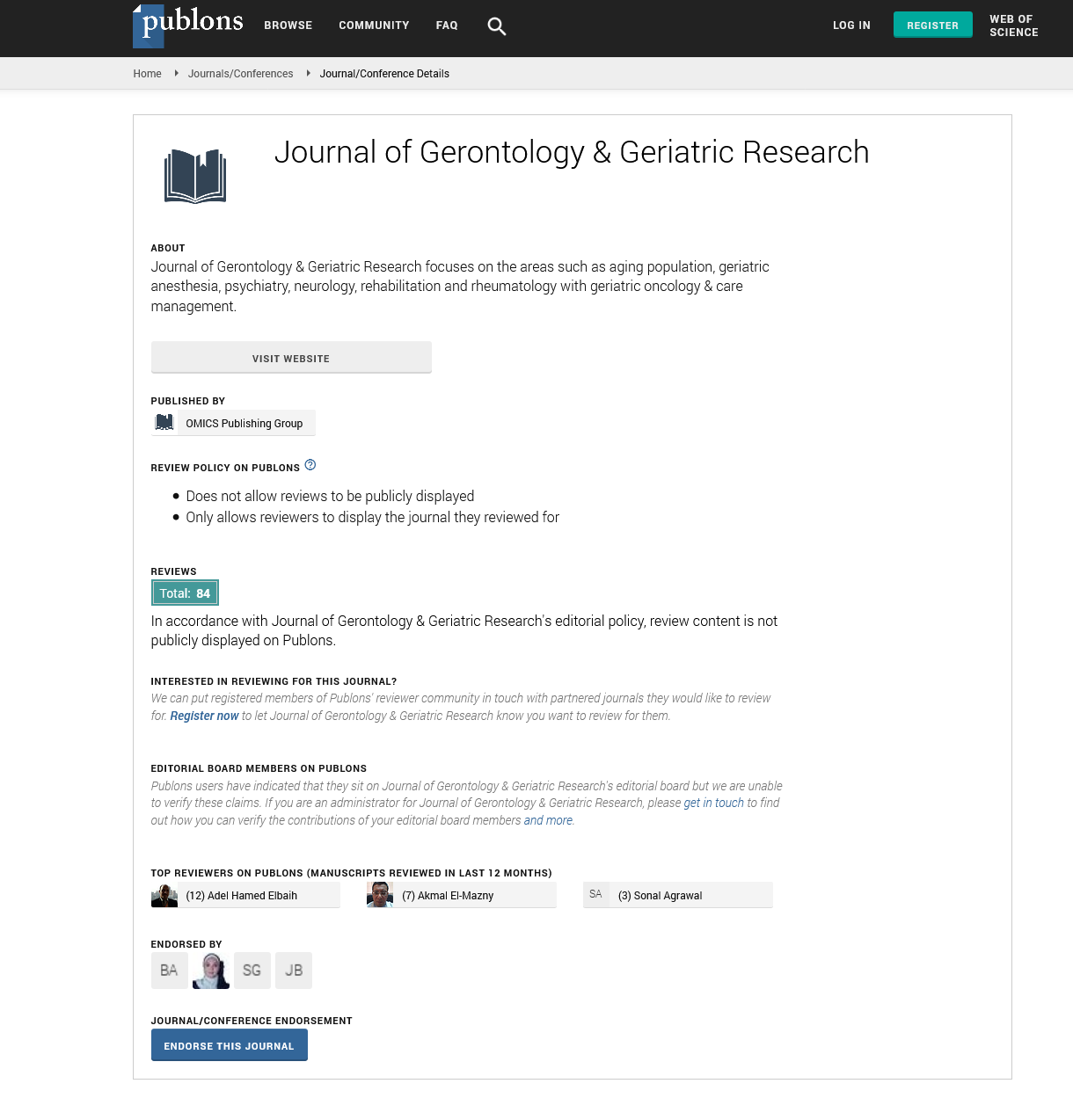Indexed In
- Open J Gate
- Genamics JournalSeek
- SafetyLit
- RefSeek
- Hamdard University
- EBSCO A-Z
- OCLC- WorldCat
- Publons
- Geneva Foundation for Medical Education and Research
- Euro Pub
- Google Scholar
Useful Links
Share This Page
Journal Flyer

Open Access Journals
- Agri and Aquaculture
- Biochemistry
- Bioinformatics & Systems Biology
- Business & Management
- Chemistry
- Clinical Sciences
- Engineering
- Food & Nutrition
- General Science
- Genetics & Molecular Biology
- Immunology & Microbiology
- Medical Sciences
- Neuroscience & Psychology
- Nursing & Health Care
- Pharmaceutical Sciences
URINARY INCONTINENCE AND RISK OF FUNCTIONAL DECLINE IN OLDER WOMEN: DATA FROM THE NORWEGIAN HUNT-STUDY
5th International Conference on Geriatric Medicine & Gerontological Nursing
November 14-15, 2016 | Atlanta, USA
Ragnhild Omli, Steinar Hunskaar, Arnstein Mykletun, Ulla Romild and Esther Kuhrij
Namdal Nursing University, Norway
Accepted Abstracts: J Gerontol Geriat Res
Abstract:
The object of this study was to determine whether Urinary Incontinence (UI) is an independent predictor in ADL decline and IADL decline in elderly women. We aimed to find out whether incontinent subjects needed more help from home nursing care and to get an insight of how the participants validated UI as a condition and if they received any treatment for their UI during the follow up period. This was a prospective cohort study conducted as part of the North-Trondelag Health Study 2 and 3 which are national representative studies in Norway. Women aged between 70 and 80 years when participating in the HUNT 2 study and participated in the HUNT 3 study were included. Analyses on self-reported urinary incontinence at baseline and functional decline during a 10-year period were performed in incontinent and continent subjects. Baseline urinary incontinence was 24%. At ten years follow up, logistic regression analysis showed an association between incontinence and decline in activities of daily living (ADL) (OR=1.18, CI=.75-1.86). Data were adjusted for ADL, IADL and comorbid conditions at baseline. Many of the participants also had one or more diseases that are known to be risk factors both to UI and to functional decline, wich makes UI a highly prevalent part of a multifactorial condition. At ten year follow up there were no significant differences in need of more help from home nursing care between continent and incontinent women. More than half of the incontinent women validated UI as most bothersome. One third underwent treatment for UI during follow up.

